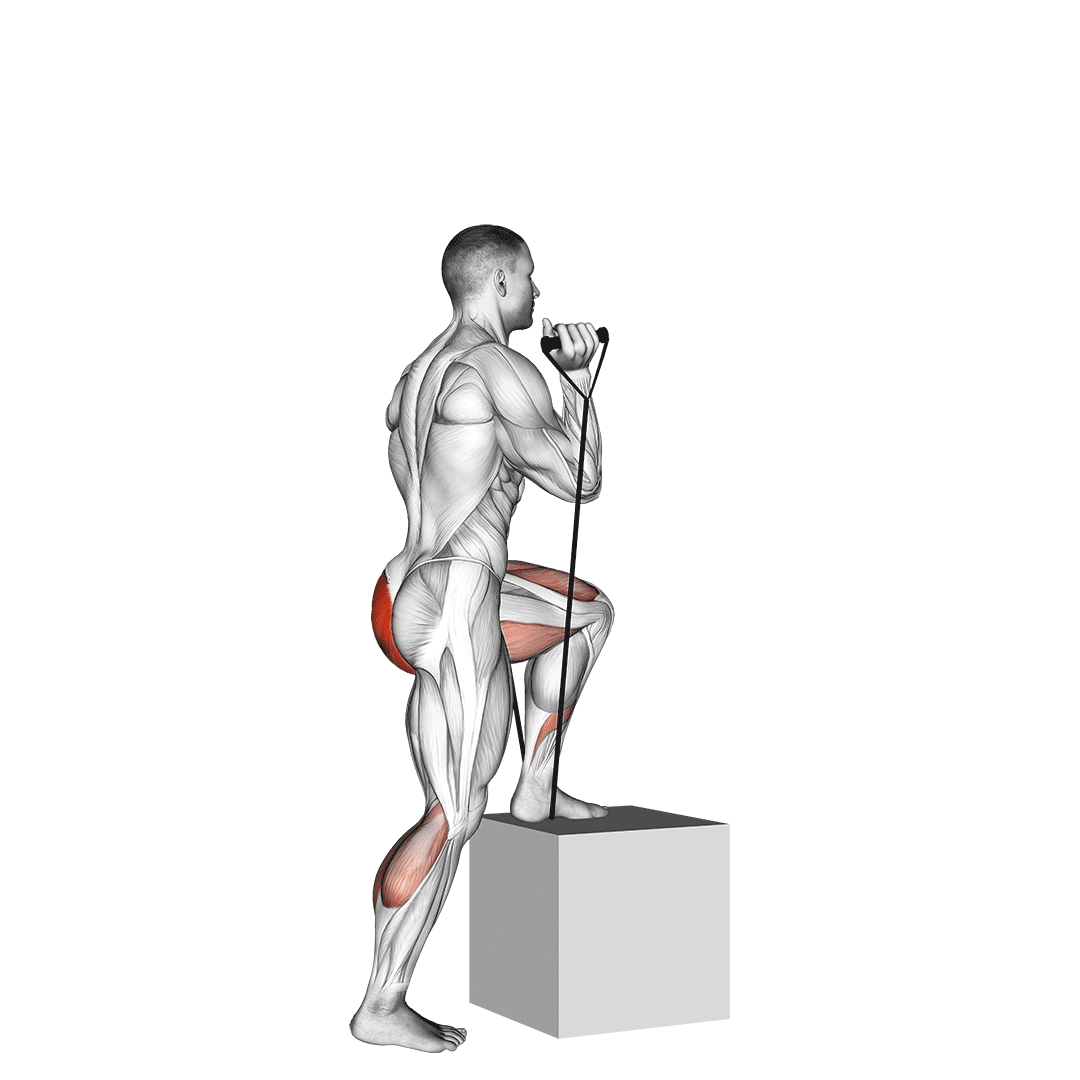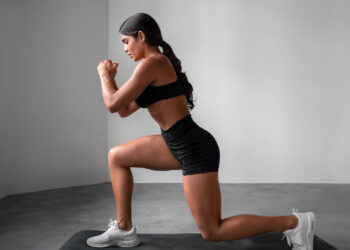Band step-up exercises strengthen your lower body muscles through targeted resistance training. The exercise works your glutes while training your quadriceps, hamstrings, and calves. This movement builds muscle strength, improves body control, and increases balance. The band provides extra resistance, which increases muscle activation and makes each workout more effective.
The band step-up focuses on three main muscles: the gluteus maximus, medius, and minimus. These muscles support everyday movements and athletic performance. The exercise also builds strength in your quadriceps and hamstrings, which helps shape your lower body. Add band step-ups to your workout 2 to 3 times each week. You can change the band resistance or step height to challenge your muscles. Make sure your step is stable and set at a height where your knee bends at 90 degrees.
Good form is essential for safety and results. Place your stepping foot fully on the bench. Keep your core muscles tight. Make each movement smooth and controlled. Beginners should start with lower steps or lighter bands. More advanced users can increase band resistance or step height for better results. Band step-ups work well in any fitness plan that focuses on building lower body strength and muscle tone.
How to Do a Band Step-Up

Start by standing with your feet at hip width. Place a resistance band under one foot and hold both ends. Keep the band tight for proper resistance.
Level Up Your Fitness: Join our 💪 strong community in Fitness Volt Newsletter. Get daily inspiration, expert-backed workouts, nutrition tips, the latest in strength sports, and the support you need to reach your goals. Subscribe for free!
- Position a sturdy bench or step in front of you.
- Step up onto the bench with your banded foot, pushing through your heel.
- Lift your opposite knee up toward your chest while maintaining balance.
- Lower your foot back to the ground and repeat for your planned repetitions.
Breathe out when stepping up and breathe in when stepping down.
Common Mistakes to Avoid
- Incorrect Band Positioning: A loose band reduces exercise benefits and can affect your balance. Keep the resistance band tight under your foot throughout the movement.
- Poor Foot Placement: Placing your foot incorrectly on the bench affects stability. Put your entire foot on the bench and maintain proper body alignment.
- Neglecting Core Engagement: A loose core reduces stability and increases injury risk. Keep your core muscles tight during the entire exercise.
- Using Momentum Instead of Strength: Swinging your leg reduces muscle benefits. Use controlled muscle strength to lift your body up and down.
- Incorrect Breathing Pattern: Poor breathing reduces exercise performance. Match your breath to each movement phase for better endurance.
Benefits
- Increases glute muscle strength for better power and stability
- Develops better balance and movement control
- Adds resistance training for increased muscle development
- Works multiple leg muscles for complete lower body strength
- Strengthens core muscles to support better posture
Exercise Variations
Alternative Exercises
Safety Precautions
Select a resistance band that matches your current fitness level. Using bands that are too strong can lead to poor form and muscle strain. Light bands might not provide enough challenge. Start with lighter resistance to master proper form. Increase band strength as your muscles get stronger.
Check your exercise equipment before each workout. Your bench or step must remain stable during use. Place it on a flat, level surface that supports your weight safely. For outdoor workouts, place a non-slip mat under your bench to prevent movement. This extra step increases workout safety.
Monitor your exercise form during each set. Keep your knee aligned with your toes as you step up. Do not let your knee extend past your toes, as this places extra stress on the joint. Stop exercising if you feel pain or discomfort. Review your technique and adjust as needed. Focus on performing each movement with proper form rather than rushing through repetitions.








